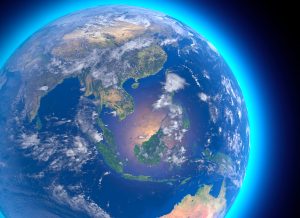As Cyclone Alfred approached Brisbane, the city’s first cyclone forecast in over five decades, we were finalizing the recommendations of our annual Griffith Asia Pacific Strategic Outlook (GAPSO). While Alfred’s unpredictable trajectory spared most of Queensland from direct destruction, it reminded us of three critical lessons to deal with uncertain times: proactive preparation, collaboration, and a clear compass driving action.
Similarly, the global landscape in 2025 is marked by unprecedented volatility across geopolitical, economic, and environmental dimensions. Shifting global power dynamics notably influenced by the U.S. withdrawal from multilateralism and sustainable development goals (SDGs), China’s increased strength in foreign policy ambitions and technological prowess, and uncertainties stemming from elections–including Australia’s — are intensifying anxieties across the Asia-Pacific region.
Yet, looking beyond this volatility, we must be clear: the fundamental goals of improving lives, generating shared wealth, and protecting nature as the foundation of our existence remain unchanged, no matter where we live. After all, the physics of climate change — which already negatively or severely impacts more than 80 percent of people in Asia and the Pacific — does not change by executive order. Wealth does not become more inclusive simply by offering chainsaw-wielding billionaires “productivity gains” through the slashing of environmental and social protections.
To navigate through this “volatility” of shifting alliances while keeping our compass straight based on these shared values and enduring sustainability objectives, our communities and decision-makers must prepare to lead with the new realities of the world today.
Yet, what does that mean?
Over the past few months, we convened key regional partners, including from U.N. organizations, research institutions, and businesses from the Pacific, Southeast Asia, South Asia, Australia, and the U.S. to develop strategies to support this leadership. Our analysis, structured across geographic (China, Southeast Asia, Pacific Islands) and thematic groups (inclusive growth, green development, fiscal policy), converged on a shared imperative: There is no time to waste.
The Asia-Pacific region must pragmatically chart its own regional course. It must strengthen collaborative bridges to all willing partners regionally and globally. It must not drift in uncertainty awaiting re-emerging external leadership.
This imperative translates into specific, actionable recommendations as articulated through GAPSO’s key strategic framework of Regional Sustainable Resilience: First, regional collaboration should be strengthened through established organizations like ASEAN, RCEP, and the Pacific Islands Forum (PIF), to actively expand their institutionalization to strengthen resilience in times of crises while building capacity to address specific sustainability goals (e.g., trade, climate, technology standards). This also involves strategic engagement with emerging frameworks such as the Belt and Road Initiative (BRI) and the Shanghai Cooperation Organization (SCO), leveraging their potential for infrastructure development and economic cooperation aligned with regional sustainable development objectives.
Second, on the national level, we call to systematically embed sustainability into national development strategies by ensuring economic policies explicitly integrate environmental protection and social equity. This should include fiscal spending, greening of state-owned enterprises, and — in the medium term — integrating non-GDP measures to measure Asian nations’ wealth.
Third, technological transformation, such as artificial intelligence (AI), must be embraced to serve as a foundational pillar with a clear mandate to open new economic opportunities and strengthen equitable participation and transparent governance.
Finally, on the organizational and community levels, regional knowledge and human networks must be strengthened to build real collaboration, improve mutual understanding, and accelerate innovation. For this, we should be empowering universities, businesses and civil society organizations that can reduce social divisions and bring together diverse people with different views from different countries — even if (or particularly if) they are politically sensitive or “not aligned.”
Our journey toward achieving sustainable development in Asia and the Pacific may have become more complex. Nevertheless, the compass guiding our journey remains clear, and we must seize this unique opportunity to strengthen Asia-Pacific collaboration and leadership. There is no time to waste.

































